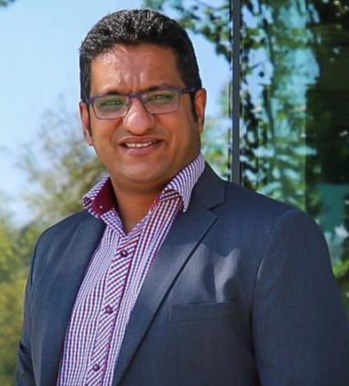Research in Action: The future of vital wireless networks
BY: KARI KLASSEN
Dr. Waleed Ejaz, Assistant Professor in the Department of Electrical Engineering at Lakehead University, recently received a National Sciences and Engineering Research Council (NSERC) Discovery Grant for his research project titled, Resource Management for Massive Connectivity in Future Wireless Networks.
It’s Ejaz’s goal to contribute to making 5G and future 6G networks accessible to everyone, regardless of where they live in the world.
“Future wireless networks are expected to provide connectivity everywhere, all the time. One way to accomplish this is through 3D networks. By 3D networks, I mean the integration of traditional terrestrial (earth-based) networks, and non-terrestrial networks such as unmanned aerial vehicles (UAV)-assisted wireless networks,” he said.
“My major focus is on effective resource management in future wireless networks, which is challenging, because of the large number of devices, diverse quality of service requirements, and high density of heterogeneous devices – networks where devices are made by different manufacturers or computers run different operating systems," Ejaz explained.
In the past, the main focus was to increase the data rate in traditional wireless networks, but now we have a more diverse quality of service requirements for different users and devices, he said.
Another issue Ejaz is encountering is the different experiences between urban and rural living.
“In urban areas we have a high density of heterogeneous devices, but in rural areas that are not very densely populated, we do not have high-quality connectivity, and this is creating a digital divide.”
COVID-19 has magnified these differences as the world has been forced online.
“Connectivity is extremely important. If people in rural areas don’t have good connectivity, they will lag behind people in urban areas who do have connectivity. So, filling this gap is one of the objectives of my project," Ejaz said.
In the last few years Ejaz has been working on communication technologies as they pertain to the Internet of Things (IoT).
“The main emphasis of my research is algorithm design, network architecture development and system-level performance analysis, so how I am going to do this is by proposing new 3D architectures and new algorithms that are low cost and don’t take much time to deploy.”
In order to accomplish his goals, Ejaz is considering different technologies to improve energy efficiency and enhance coverage, including the deployment of unmanned aerial vehicles (UAVs).
“My goal is to enhance coverage using the existing terrestrial network, as well as the deployment of UAV networks," Ejaz explained. "Within that there are challenges such as interference, optimization of resources, as well as energy efficiency issues. We’ll be looking at self-sustainable 3D networks which must sustain their resource usage by wireless power transfer and energy harvesting to maintain uninterrupted operations.”
One of the United Nations 2030 sustainable development goals includes universal and affordable access to internet connectivity.
“In 2016, the United Nations declared the internet a basic human right. Similarly, from the Canadian perspective, the government of Canada committed that all Canadians will have the basic internet connectivity of 50Mbps download speed and 10Mbps upload speed," Ejaz explained.
"But if we are talking about rural areas, there are still existing communities where we do not have this reliable connectivity. With COVID, we became even more reliant on the internet," he said.
"Everyone from education to the health care sector are dependent on connectivity. Providing reliable connectivity everywhere will also lift the economy by incorporating everyone’s ability to contribute to wealth.”
Ejaz believes his research will lay a scientific research foundation that will contribute to Canada’s Innovation and Skills Plan in supporting world-class networks and advancement in new technologies and services to Canadians.

